05-08-2010 Original publish date
02-13-2016 update: recovered broken image links, archived report under Financial Markets History
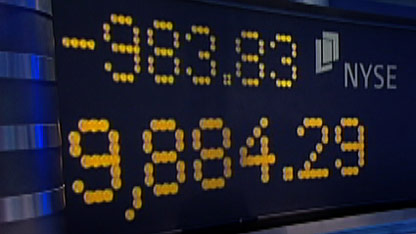
Flash Crash – Market Panic on 05-06-2010
original article written by Net Advisor™
NEW YORK, New York. Just when you thought it was safe to buy couple thousand dollars of that stock you wanted, if you were one of the few who got lucky and timed it right, you may have made a small fortune, or found out what NASDAQ givith, NASDAQ takith away.
NASDAQ decided to cancel trades on 296 stocks that got all “funked up” when the market tanked nearly 1,000 points on 05-06-2010.
“NASDAQ has said it will cancel all trades that were executed between 2 p.m. and 3 p.m. ET, in which the stock price traded more than 60% off of the stock’s price at 2:40 p.m.” (Source: CNN).
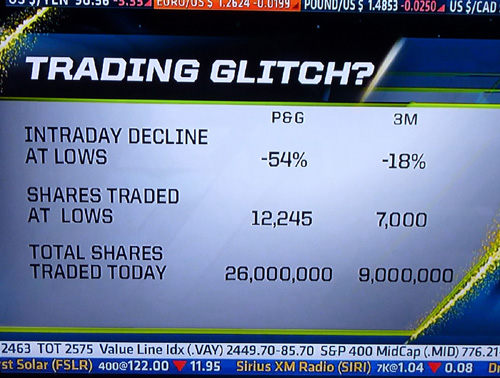
Proctor & Gamble (PG) had temporally lost more than half of its total company value for a brief time on 05-06-2010.
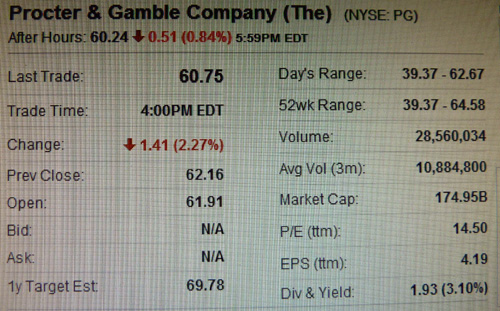
PG stock went from a high of $62.67 to low $39.37, then immediately bounced to $50 range, and closed at $62.24
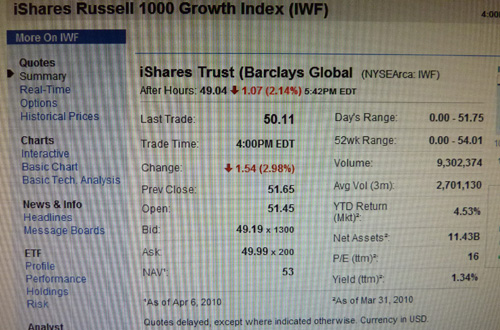
The iShares Russell 1000 Index, traded a high of the day of $51.75 and a low of $0.00 – yes, an index traded at ZERO (technically speaking), the entire 1,000 stocks in the index got wiped out at $0.00, then surged back to close at $50.11
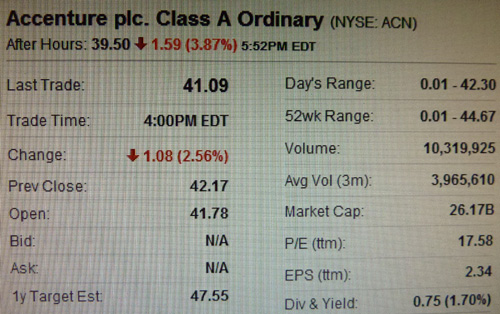
Accenture PLC (ACN), an Irish company trading ordinary shares in the USA with 181,000 employees, saw its stock trade from a day high of $42.30 all the way down to a low of $0.01 – yes, 1 cent. It then surged back to close at $41.09. So in theory, one may have attempted to buy all the shares for double the bid, 2 cents costing you $63 million (if my math is correct here), or $31.5 million if you are on margin). What would you have received for that investment? We’ll, for starters, the company is holding $4.2 billion in cash alone. Accenture was one of NASDAQ’s “funked up” list of companies where it canceled all trades in this stock, below $17.74 for the day.
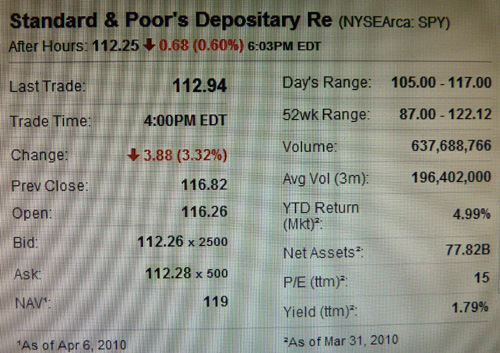
The S&P 500 Index moved from a day’s high of 117 to the low of 105 before rebounding back to 112.94. That’s a 10.23% INTRADAY drop from the high and low! Then the S&P 500 then took a 7.6% rocket boot off that low to the close. Note the trading volume is over 300% its average daily volume. High trading volume was common with virtually all major stocks on 05-06-2010. Major market indexes such as the Dow, the NASDAQ, the S&P 500, etc, can take up to several months or longer to experience a 10% of more correction. The S&P 500 did this in less than 1 day.
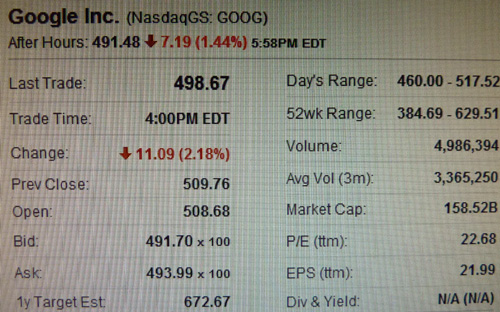
Google (GOOG) also had a roller-coaster move trading down from $517.52 during the day to $460.00 or down $52.52, then rebounding $38.67 off the day’s low to close at $498.67. Google’s stock has been in a down trend from its 2010 high of 629.51, down 20.78%.
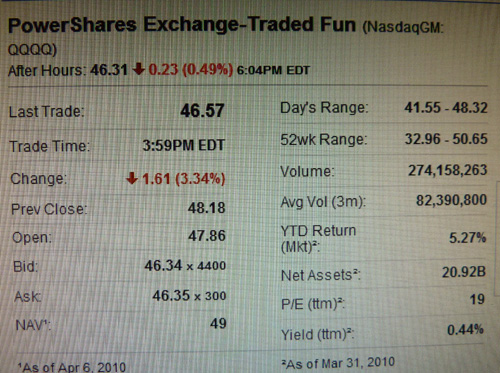
The Quad Q’s (QQQQ) which is an ETF tracking the NASDAQ 100 Index. Trading on over THREE times (300%+) its average daily volume, the Quad Q’s fell 14% from its day high to day low on 05-06-2010. The Q’s then rebounded 12.08% off its day lows.
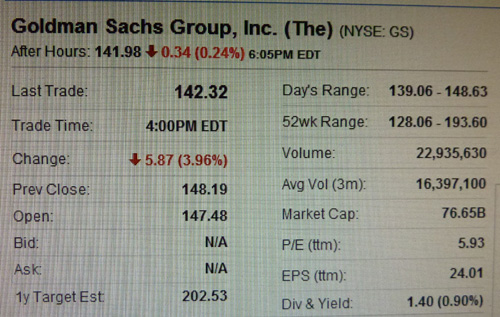
One of the stocks in recent controversy with the SEC, Goldman Sachs (GS), managed to do fairly well falling only 6.4% from its day high, and recovered 2.34% from its day lows. However, Goldman has fallen $51.28 or 26.49% from its 52 week high made in October 2009. Goldman Sachs was at $184.27 on April 15, 2009, 1 day before the SEC filed its complaint.
These events have never happened in my 21 years in the markets. I have never even read an index go from about $51 to $ zero then back to $50 in a day.
Read more:
Anatomy of a Stock Market Sell Off
__________________________________________________________________________
short link: https://www.netadvisor.org/?p=6078
Image credits: (c) CNBC and Yahoo, Inc. NYSE board image credit: CNN, or their respective owner(s)
Copyright © 2010 Net Advisor™ All Rights Reserved.
Revised copyright 2016 NetAdvisor.org® All Rights Reserved.
NetAdvisor.org® is a non-profit organization providing public education and analysis primarily on the U.S. financial markets, personal finance and analysis with a transparent look into U.S. public policy. We also perform and report on financial investigations to help protect the public interest. Read More.
__________________________________________________________________________

